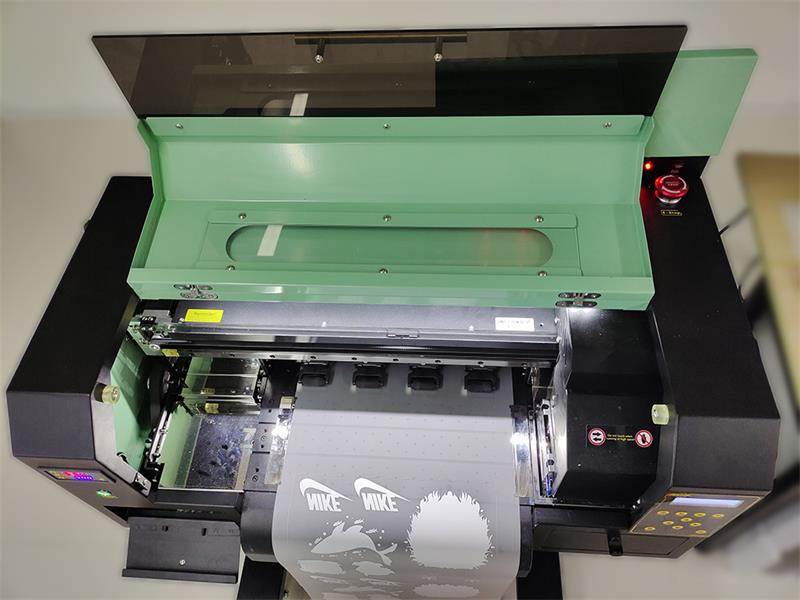UV printing is a modern printing technique that utilizes ultraviolet (UV) light to cure or dry inks instantly. The principle of UV printing involves a unique process that offers several advantages over traditional printing methods. Here's a breakdown of how UV printing works:

1. Ink Formulation: UV inks used in UV printing contain photoinitiators, which are chemical compounds that react when exposed to UV light. These photoinitiators initiate a chemical reaction, known as polymerization, which causes the ink to solidify or cure quickly.
2. Printing Process: In UV printing, the UV ink is applied to the substrate using a digital printer or other printing equipment, similar to traditional printing methods. The UV ink can be applied to various materials, including paper, plastic, glass, metal, and more.
3. UV Light Exposure: After the UV ink is applied to the substrate, it passes through a UV curing unit or UV lamp. The UV lamp emits high-intensity UV light, typically in the UVA or UVB range. When the UV light comes into contact with the UV ink, the photoinitiators in the ink absorb the UV energy and initiate the curing process.
4. Instant Curing: The UV ink rapidly undergoes polymerization when exposed to the UV light. The photoinitiators in the ink react with the UV energy, causing the ink to solidify and form a durable and dry surface almost instantly. This instant curing eliminates the need for additional drying time and allows for immediate handling of the printed materials.
Advantages of UV Printing:
1. Faster Production Times: UV printing offers rapid curing, allowing for faster production times compared to traditional methods. The instant drying eliminates the need for drying time, enabling faster printing speeds and increased productivity.
2. Vibrant Colors and Sharp Details: UV inks used in UV printing produce vibrant and high-quality prints. The UV curing process allows for better color saturation and sharpness, resulting in visually appealing and detailed prints.
3. Versatile Substrate Compatibility: UV printing is compatible with a wide range of substrates, including paper, plastic, glass, metal, wood, and more. This versatility makes UV printing suitable for various applications, such as signage, packaging, labels, promotional items, and even three-dimensional objects.
4. Environmentally Friendly: UV printing is considered more environmentally friendly compared to traditional printing methods that use solvent-based inks. UV inks are generally free from volatile organic compounds (VOCs) and do not release harmful fumes into the environment. Additionally, UV printing produces less waste as there is no need for solvent evaporation or drying.
5. Durability and Resistance: UV-cured prints are highly durable and resistant to scratches, fading, and water damage. The cured ink forms a strong bond with the substrate, resulting in long-lasting and resilient prints.
UV printing has gained popularity across various industries due to its fast curing times, vibrant colors, versatility, and durability. It offers enhanced printing capabilities and improved efficiency, making it a preferred choice for many businesses.
kenteer has launched UV Printers for customers . If you have any needs, you can contact us for a quote.
